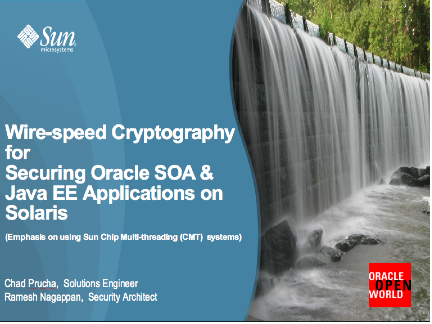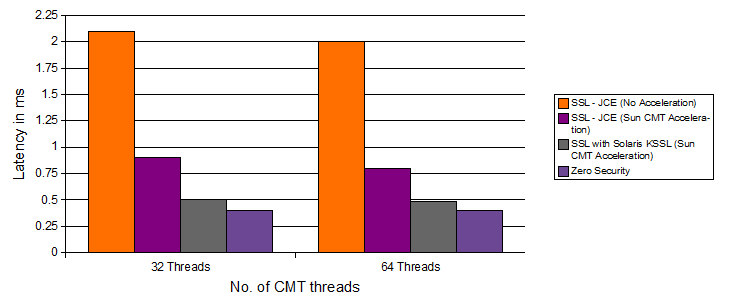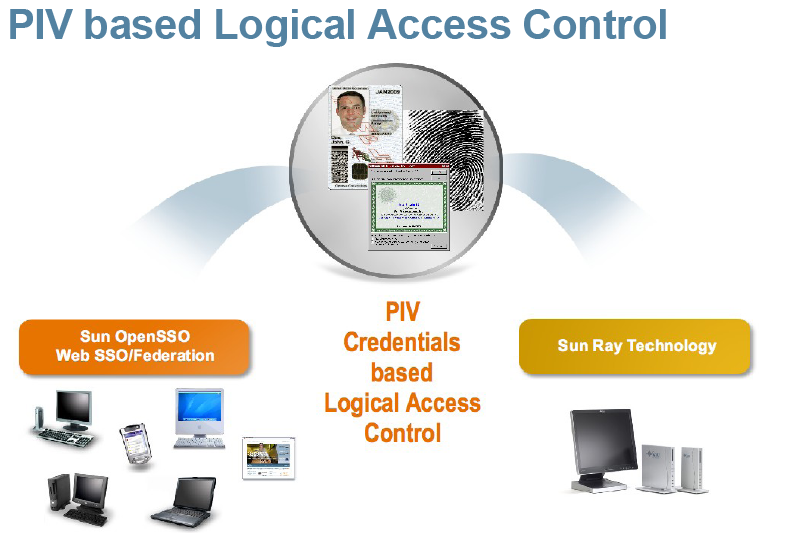 Java EE 6 RI was released few weeks ago….I am bit late to have my first look 🙂 Without a doubt, the new Web container security enhancements are very compelling for any budding or experienced Java developer working on Web applications. The Java EE 6 has unveiled several new security features with ease of use and targetted for simplified Web application security deployments. Based on Servlet 3.0 specification, the Java EE 6 Web applications can take advantage of an enriched set of programmatic and declarative security features and Security annotations previously available to EJB 3.x applications. Also, the deployed Web applications/Web Services can use JSR-196 based pluggable authentication/authorization modules (based on SOAP Web Services) that can be configured as part of the Servlet container.
Java EE 6 RI was released few weeks ago….I am bit late to have my first look 🙂 Without a doubt, the new Web container security enhancements are very compelling for any budding or experienced Java developer working on Web applications. The Java EE 6 has unveiled several new security features with ease of use and targetted for simplified Web application security deployments. Based on Servlet 3.0 specification, the Java EE 6 Web applications can take advantage of an enriched set of programmatic and declarative security features and Security annotations previously available to EJB 3.x applications. Also, the deployed Web applications/Web Services can use JSR-196 based pluggable authentication/authorization modules (based on SOAP Web Services) that can be configured as part of the Servlet container.
Java EE 6 : Programmatic Security for Web Applications
The newly introduced Java EE 6 programmatic security features for Web applications are represented by the following methods of HttpServletRequest interface:
1. authenticate()
- This method helps to initiate authentication of the calling user by launching an authentication dialog for acquiring username/password and perform BASIC authentication by the container within an unconstrained request context.
import java.io.*;
import javax.servlet.*;
import javax.servlet.http.*;
public class MyAuthServlet extends HttpServlet {
protected void processRequest(HttpServletRequest request, HttpServletResponse response)
throws ServletException, IOException {
response.setContentType(“text/html;charset=UTF-8”);
PrintWriter out = response.getWriter();
try {
//Launch the BASIC authentication dialog
request.authenticate(response);
out.println(“Authenticate Successful”);
} finally {
out.close();
}
public void doGet(HttpServletRequest request, HttpServletResponse response) throws ServletException, IOException {
processRequest(request, response);
}
public void doPost(HttpServletRequest request, HttpServletResponse response) throws ServletException, IOException {
processRequest(request, response);
}
}
2. login() and logout ()
- The login() method allows to programmatically collect with the provided username/password credentials (as an alternative to FORM-based authentication) and perform user authentication.
- The logout() method performs logging out the user and resets the context.
import java.io.*;
import javax.servlet.*;
import javax.servlet.http.*;
public class MySecurityServlet extends HttpServlet {
protected void processRequest(HttpServletRequest request, HttpServletResponse response)
throws ServletException, IOException {
response.setContentType(“text/html;charset=UTF-8”);
PrintWriter out = response.getWriter();
try {
String myUsername = request.getParameter(“UserName”);
String myPassword = request.getParameter(“Password”);
try {
request.login(myUsername, myPassword);
} catch(ServletException ex) {
out.println(“Login Failed” + ex.getMessage());
return;
}
} catch (Exception e) {
throw new ServletException(e);
} finally {
request.logout();
out.close();
}
}
public void doGet(HttpServletRequest request, HttpServletResponse response) throws ServletException, IOException {
processRequest(request, response);
}
public void doPost(HttpServletRequest request, HttpServletResponse response) throws ServletException, IOException {
processRequest(request, response);
}
}
The above code assumes the authentication is configured to BASIC by setting the login-config element in web.xml. If the authentication is the successful, the Web application can take advantage of the following methods in the HttpServletRequest interface to identify the remote user, role attributes and to perform business logic decisions.
3. getRemoteUser()
- Determines the authenticate username of the remote user associated with the request. If no authentication occured, it will return a null value.
4. IsUserInRole(..rolename..)
- Determines whether the authenticated user is in a specified security role. If the user is not authenticated, it returns false.
5. getUserPrincipal()
- Determines the principal name that represents the authenticated user entity (name of the remote user) and returns a java.security.Principal object corresponding to the user.
Here is my sample code that I tested it on Glassfish v3 (Developer Sample):
import java.io.*;
import javax.servlet.*;
import javax.servlet.http.*;
import javax.servlet.annotation.WebServlet;
import javax.annotation.security.DeclareRoles;
//Annotation for defining the Servlet name and its URL pattern
@WebServlet(name=”MySecurityServlet”, urlPatterns={“/MySecurityServlet”})
// Annotation for declaring roles
@DeclareRoles(“securityguy”)
public class MySecurityServlet extends HttpServlet {
protected void processRequest(HttpServletRequest request, HttpServletResponse response)
throws ServletException, IOException {
response.setContentType(“text/html;charset=UTF-8”);
PrintWriter out = response.getWriter();
try {
String myUsername = request.getParameter(“UserName”);
String myPassword = request.getParameter(“Password”);
try {
request.login(myUsername, myPassword);
} catch(ServletException ex) {
out.println(“Login Failed” + ex.getMessage());
return;
}
out.println(“The authenticated user is in Role: ” + request.isUserInRole(“securityguy”));
out.println(“The authenticated remote username: ” + request.getRemoteUser());
out.println(“The authenticated Principal name: ” + request.getUserPrincipal());
out.println(“The authentication type: ” + request.getAuthType());
} catch (Exception e) {
throw new ServletException(e);
} finally {
request.logout();
out.close();
}
}
public void doGet(HttpServletRequest request, HttpServletResponse response) throws ServletException, IOException {
processRequest(request, response);
}
public void doPost(HttpServletRequest request, HttpServletResponse response) throws ServletException, IOException {
processRequest(request, response);
}
}
To test the code, it is assumed that you have the Java EE runtime deployment descriptor include the appropriate role mapping that associated the user with the specified role-name.
Security Annotations for the Web Applications
With Servlet 3.0 implementation, we would able to use standard Java annotations for declaring security constraints as equivalent to those defined in a standard Web deployment descriptor (web.xml). With Security annotation you should able to define roles, access control to HTTP methods, transport-layer protection (for enforcing SSL/TLS). To make use of security annotations in Servlets, Servlet 3.0 has introduced @ServletSecurity annotation to support defining security constraints.
Using @ServletSecurity
The @ServletSecurity annotation allows to define the security constraints as its fields:
- @HttpConstraint – Used as a field of @ServletSecurity to specify roles to all methods and ensure transport-layer security)
- ex. @ServletSecurity(@HttpConstraint(rolesAllowed={“customer”})) – Ensures all HTTP methods (GET, POST, TRACE) are protected and access is allowed to security role “customer”.
- ex. @ServletSecurity(@HttpConstraint(transportGuarantee=ServletSecurity.TransportGuarantee.CONFIDENTIAL)) – Ensures all methods require SSL transport
- @HttpMethodConstraint (Applied to define methods ex. GET, POST, TRACE)
- ex. ServletSecurity(value=@HttpConstraint(httpMethodConstraints={ @HttpMethodConstraint(value=”POST”, transportGuarantee=ServletSecurity.TransportGuarantee.NONE, rolesAllowed={“customer”}) }) – Ensures only authenticated users with security role is allowed to access HTTP POST method and transport-layer security/SSL is supported but not required.
- @DeclareRoles (Allows to define security roles)
- @RoleAllowed (Allows to define authorized roles)
Here is a quick usage scenario of @ServletSecurity annotation (Developer Sample):
import java.io.*;
import javax.servlet.*;
import javax.servlet.http.*;
import javax.annotation.security.*;
@DeclareRoles("customer","guest")
@ServletSecurity(@HttpConstraint(rolesAllowed={"customer"}))
public class MyHelloWorld extends HttpServlet {
public void doGet(HttpServletRequest request, HttpServletResponse response) throws ServletException, IOException {
PrintWriter out = response.getWriter();
out.println("Hello World");
}
public void doPost(HttpServletRequest request, HttpServletResponse response) throws ServletException, IOException {
response.setContentType("text/html");
PrintWriter out = response.getWriter();
out.println("Hello World");
out.close();
}
}
Sometimes, it’s the small things that make even complex things much easier. Way to go…Java EE 6 !
Here is couple of references, you may consider to explore Java EE 6:
Glassfish v3/Java EE 6 Sample Applications
Enjoy 🙂










